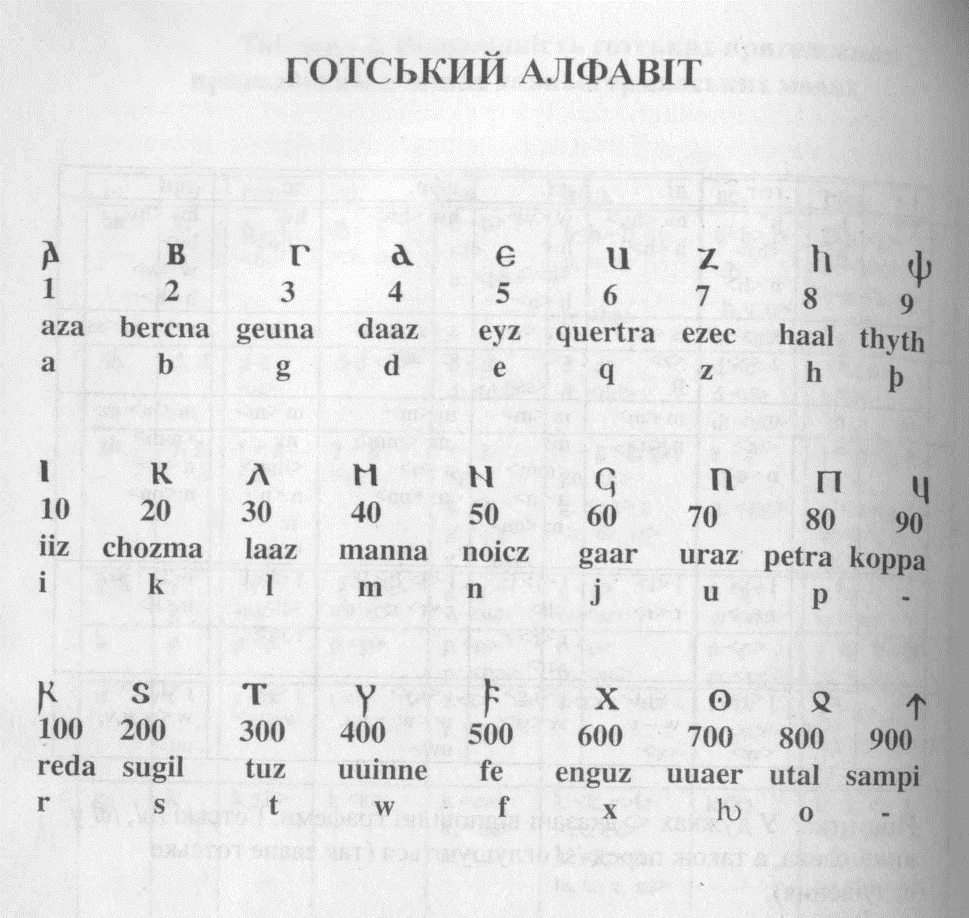43. Old Germanic vocabulary
44. Common sources of Germanic vocabulary
45. Borrowings in Old Germanic languages (in Old English)
46. Word-building processes in Old Germanic languages
47. Word-composition and its role in Old Germanic vocabulary enrichment
48. Conversion as a means of word-building in Old Germanic. Was it used or not?
49. The principles of language evolution on different language levels
50. The factors of language change
51. The laws of semantic change
3. Solve the following etymological tasks:
There are Engl. find, Germ. findan, Goth. finþan, Lat. pons, pontis ‘bridge’, Gk. pontos ‘way through the sea’, Russ. путь. Prove their relatedness, explain the correspondences and reconstruct IE root.
There are Russ. вертеть, Lat. vertere, Germ. warden, OE weorþan, Goth. wairþan. Reconstruct the correspondent variants of IE root which the abovementioned words derive from.
There are Germ. Holz ‘wood, timber’, OHG holz, Engl. holt, OE holt, Russ. колода. Reconstruct IE root.
There are Engl. grim, Germ. Grimm ‘fury’, Russ. гром, греметь, Ukr. грім. Reconstruct IE root and explain the sound correspondences.
There Engl. yellow, Germ. gelb ‘yellow’, OHG gelo, Russ. зеленый, Lat. helvus ‘yellow as honey’. Prove the relatedness, explain the correspondences, reconstruct IE root.
Can Engl. blue, Germ. blau and Lat. flavus be related?
Can Engl. sheep, Germ. Schaf, Lith. skapas be related?
There are Lith. buti, Lat. fu-i, OE buan. Find English, Ukrainian and Russian correspondent verbs.
There are Engl. tooth, OE toð, OHG zant, Goth. tunþus, Lath. dens (dentis). Prove the relatedness, explain correspondences and the absence of [n] in English, reconstruct IE root.
Prove the genetic relatedness of Engl. breast, Germ. Brust, Goth. brust, Russ. брюхо. Reconstruct IE consonants.
Prove the genetic relatedness of Germ. Berg, Russ. берег. Reconstruct IE consonants.
There is Ukr. долина. Reconstruct Gothic, English and German roots.
There are Engl. tilt, OE teld, Germ. Zelt. Reconstruct consonants of IE root.
There are Ukr. беру, Russ. беру, Lat. fero ‘I carry’. Which English and German correspondences they have?
prove the genetic relatedness of Lith. kaimas ‘village’, Goth. haims ‘village’, Germ. Heim, Engl. home. Reconstruct IE root.
There are Ukr. багаття, Gk. phogo ‘I roast’, OHG bahhan, Germ. backen. Find English cognate word. Prove their relatedness, reconstruct IE root.
There are Gk. kratys ‘strong’, Goth. hardus ‘strict, strong’, Engl. hard, Germ. hart. Prove their relatedness, reconstruct consonants in IE root.
There are Ukr. борщ, Engl. bristle, Germ. Borste. Are they related? Prove. Reconstruct IE root.
There is IE *melg-, Goth. miluks, OE milc, Engl. milk. Find German correspondence. Explain the sound correspondences, explain change e>i.
There are Engl. clothe, sheath, south, shape, help, sit. Fill in the blank letters in German words: Klei_, Schei_e, Sü_en, scha_en, hel_en, si_en.
Find English correspondences for German kaufen, Zunge, Kessel, Straße, Wasser, Minze, Koch,Ding, Traum, durch, trinken. Explain the correspondences.
Are Germ. kurz and Ukr. короткий and Engl. short related? Prove.
Find English cognates for Ukrainian бути, болото, долина, дякувати, золотий, зелений, око, їсти, сіяти, радити, дрімати, брехати, лежати, рудий, гадати. Explain the sound correspondences.
Explain the correspondence: Lat. septem, Engl. seven, Germ. sieben.
There is Goth. badi, OE bedd, Engl. Bed, Germ. Bett. Prove relatedness, explain sound correspondences (vowel and consonant). Enumerate all phonetic changes these words illustrate.
Find Germanic and Indo-European correspondences for the following Gothic words: dauhtar, twai, bihlahjan, qiman, ubil. Reconstruct IE root and explain the correspondences between cognates.
Find the cognates in other Old Germanic languages for the following Gothic ones: nu, ains, qiman, wintrus, attekan, gaswiltan, sunus, slepan, ut, merjan, lamb, baurgs, wairþan. Explain vowel and consonant correspondences.
ГОТСЬКИЙ АЛФАВІТ ТА ПРАВИЛА ЧИТАННЯ ГОТСЬКИХ ТЕКСТІВ

Під час читання текстів слід звертати увагу на наступні спослучення букв готського алфавіту (в латиньській транслітерації): літери е і о завжди позначають відповідні довгі голосні:
сполучення ei позначає довгий i (пор. roт. steigan = двн. stigan);
літери а і u позначають короткі і довгі відповідні голосні (пор. гот. fadar = двн. fater, гот. fahan = двн. fâhan, гот. sunus = двн. sunu, гот. bus = двн. hŭs);
сполучення ai може позначати:
а) дифтонг ai (пор. гот. ains = двн. ein, гот. haitan = двн. heizan, roт. habais — двн. habes),
б) короткий відкритий е
перед h та r, перед якими в готській має місце зниження короткого i в е (пор. airÞa земля, faihu гроші = двн. fihu худоба),
в першому складі форм минулого часу редуплікованих дієслів (пор. lailot залишив, saiso посіяв),
в сполучнику aiÞÞau або (= двн. eddo),
в словах, які запозичені з грецької і в яких є грецький короткий е (пор. гот. aikklesjo церква);
неясним виявляється звукове значення ai перед голосними в таких словах, як saian сіяти або waian віяти, тому що згідно з етимологією ai відповідає германському довгому е = двн. а (пор. гот. seÞs = двн. sât та двн. дієслова sâen, wâen).
сполучення au читається також двома способами:
а) як дифтонг au (пор. гот. raгÞs = двн, rôt червоний, гот. augo = двн. ouga око,
б) як короткий вікритий о (пор. гот. dauhtar = двн. tohter дочка, roт. baurgs = двн. burg місто);
невизначеним виявляється звукове значення au перед голосними в таких словах, як stauida — мин. ч. від даєслова stojan судити або sauil сонце, тому що згідно з етимологією готське au відповідає давньому германському довгому о або u.
Стосовно звукового значення приголосних слід мати на увазі наступні літери:
b та d спочатку слова і в середині слова після приголосного вимовляються як проривні дзвінкі, після голосного звуку в середині слова — як фрикативні дзвінкі;
літера g на початку слова слід вимовляти як дзвінкий проривний приголосний, в середині та в кінці слова можлива спірантна вимова цього звуку;
літери q та ђ позначають сполучення k+w, h+w;
літера Þпозначає глухий спірант та відповідає сучасному англійському глухому th [Θ];
літера s вимовляється завжди як глухий, a z – як відповідний дзвінкий приголосний.
|
 Скачать 0.68 Mb.
Скачать 0.68 Mb.
